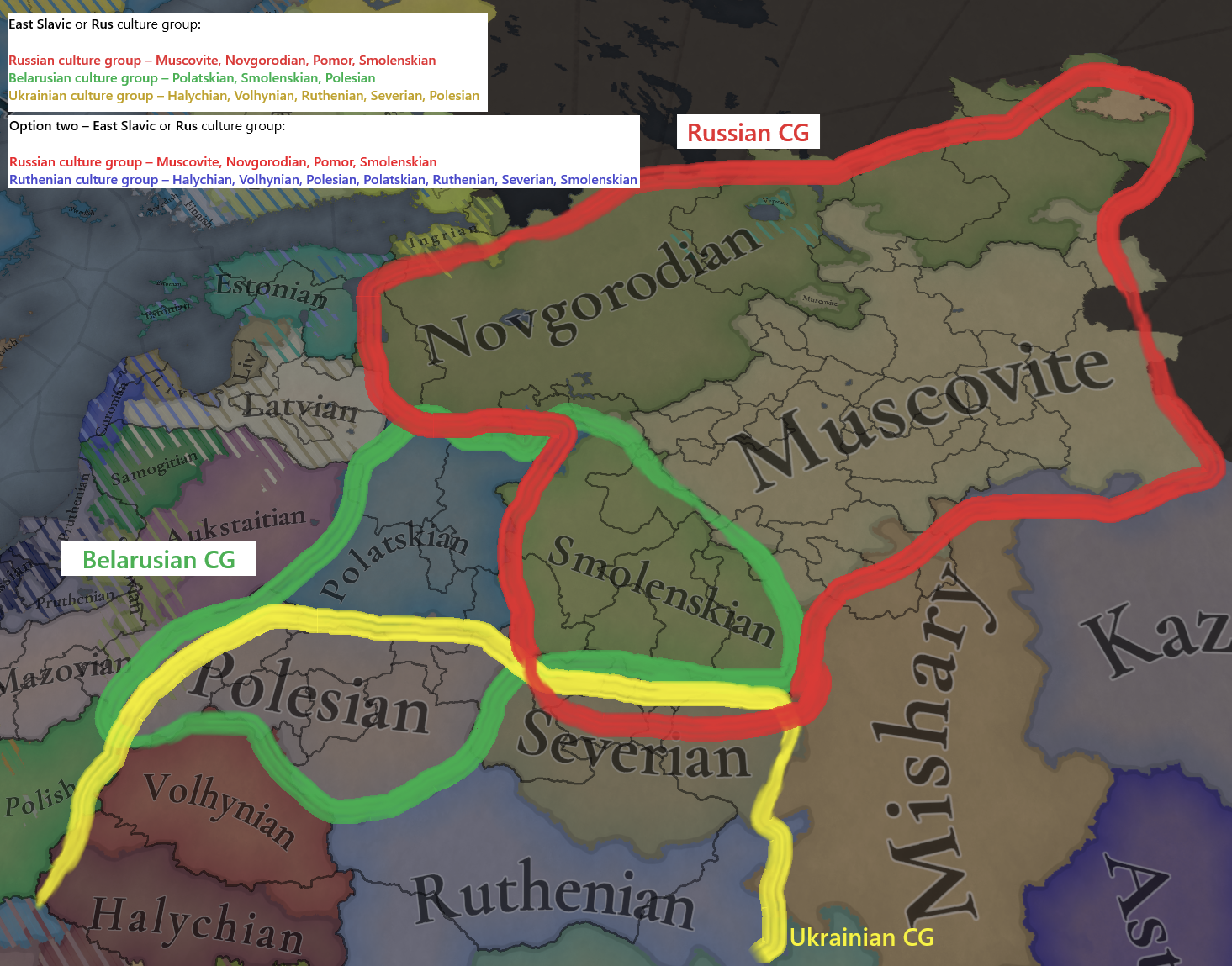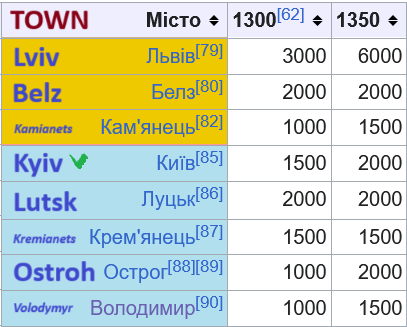Hi there! Dave has brought this to my attention, and it also may be relevant to poke
@Dennis [UA] , after:
https://forum.paradoxplaza.com/foru...ut-east-slavic-culture-labels-in-eu5.1743555/
What is shown there are the Culture Groups, which are a dynamic label that we use to group different cultures, and add flavour to them. As the main mechanics related to culture, such as Cultural Acceptance/Tolerance, Cultural Assimilation, and Culture Wars are tied directly to Cultures and Languages, they are not so relevant compared to EU4 Culture Groups.
View attachment 1294248
View attachment 1294251
Here you have the tooltip with all the information about a culture, and also the Russian culture group.
This is the status of the cultures of the region in 1337:
View attachment 1294253
And this is the status of the languages - 1. Language Families 2. Languages 3. Dialects:
View attachment 1294255
View attachment 1294256
View attachment 1294258
Therefore, the Russian culture group is not so relevant as you might think, gameplay-wise. However, something that could be done to reduce the redundancy of having a "Russian" language, dialect, and culture group, which may be confusing, is to rename the culture group to "Rus' ", which also fits its descriptions.
Thank you for your response and for all the information provided. I appreciate your attention and commitment to engaging with the community. Referring to this culture group as
Rus’ or
East Slavic would indeed be more appropriate. The latter term may be preferable, as it remains relevant throughout the entire timeline of the game, including its later stages. There is one aspect I would still like to clarify—namely, the Culture Unification mechanic, or more specifically, the cabinet action mentioned in the relevant
Tinto Talks.
Unify Culture Group
If you are an Empire, and the Dominant Country of your primary culture, the Unify Culture Group cabinet action can be used on a culture group belonging to your primary culture that has no other countries with that culture group. Upon completion, your primary culture will change to a brand new culture. Pops in your country of the same culture group and language will also change to this culture. This can only be done once.
As I understand it, other countries belonging to the same culture group must not exist in order for unification to be possible. However, I’m unsure whether this restriction also applies to Russia. It appears that Russia can unify its culture group when formed via decision, regardless of whether other tags from the same group are still present on the map.
Is this still the case? For example, would Russia need to conquer Halych (assuming it wasn’t annexed by Poland) in order to unify the cultural group? If not (which would be completely ok), then it might be reasonable for Ruthenian cultures to also be able to unify their area without needing to conquer, say, Novgorod—or being blocked by a Russia that automatically unifies the group upon formation.
One possible solution could be to separate Russian and Ruthenian into distinct cultural groups (with or without also having East Slavic group). But if there’s a better way to implement this, that would also be perfectly fine.
Lastly, one final note: regardless of how the cultural groups are set up, it would be helpful if the new culture created through unification were named
Russian or
Ruthenian depending on language they have (as cultures with other language will not change to this new culture)






















